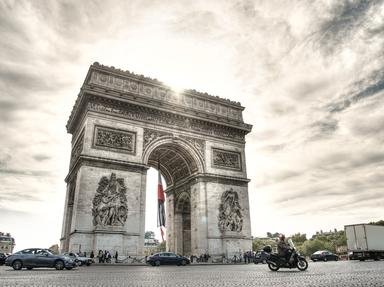Quiz Answer Key and Fun Facts
1. France had a forerunner of internal strife and disorder about 140 years before 1789, a five year period of uprisings and power politics that caused the royal family to vacate the Louvre for Versailles. What was this period called?
2. Marie Antoinette, France's queen, was despised by the mobs and, once Finance Minister Necker was fired (he was very popular with the peasantry because of his attempts to establish fairer taxes) Marie Antoinette was assumed to be responsible, and acquired one of her many nicknames, 'Madame _____ '?
3. The 'official' start of the French revolution was not the Parisian mob's march to Versailles to demand bread, but rather the storming of the Bastille on July 14, 1789. What was the Bastille at the time?
4. The revolution gathered momentum after the Bastille was taken, and the mob marched to Versailles and forced the Royal Family back to Paris. Where in Paris were they taken?
5. Upon the completion of a constitution by the Legislative Assembly, Louis XVI became a 'constitutional monarch', no longer ruling by 'divine right'. One of the men elected to the Assembly was called Philippe Egalite. He had a connection to the Royal family. What was his connection to Louis XVI?
6. After the deaths of Louis XVI and Marie Antoinette, the violence escalated to the point that the Legislature feared anarchy and tried to stop the now uncontrollable mobs. Thus the Reign of Terror began, opening the door for a former lawyer to rise to power. What was his name?
7. The preferred method of execution was the guillotine and was once associated with the French nobility. Why?
8. After Louis XVI was executed, a constitutional monarchy was no longer reasonable (his son, the Dauphin and future Louis XVII was only 10 years old). What executive body ruled France till 1795?
9. The revolution to all intent and purpose ended when the mobs revolted once again since they deemed the constitution to be a giant step backwards. The new constitution restricted voting to the wealthier classes, for example. Military force was used to quell the rioting; citizens were now the victims of artillery fire if they got out of hand. Who was in charge of the military intervention?
10. After the Reign of Terror, the Directory and the rule of Napoleon, the monarchy didn't look so bad. The Bourbons were restored to the throne briefly, but the restoration was not successful.
Source: Author
vendome
This quiz was reviewed by FunTrivia editor
bloomsby before going online.
Any errors found in FunTrivia content are routinely corrected through our feedback system.

